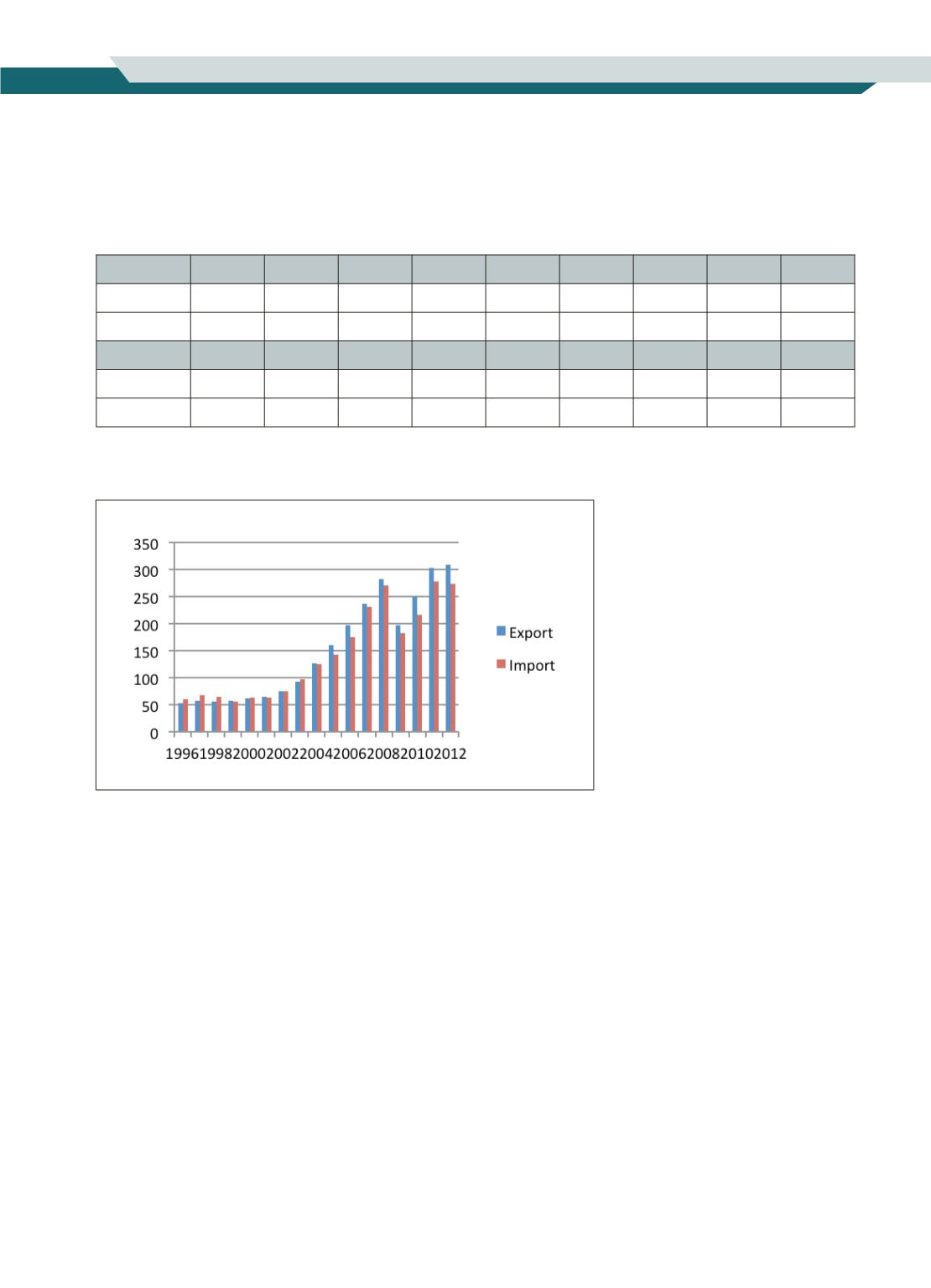

Analysis of Bilateral Trade Between EU-15 and Selected Balkans and Black Sea Countries
35
n
trade surplus in favor of BBSCs which was $17.2 bn in 2005 and $34.8 bn in 2012. Actually this value may signifi-
cantly change that is due to the removal of some of the countries such as Serbia and Montenegro and Bosnia and
Herzegovina and Moldova.
Table 3:
BBSCs Trade Relations with EU-15, 1996-2012 (bn $)
Year
1996 1997 1998 1999 2000 2001 2002 2003 2004
Export
52.9
57.1
55.0
57.4
61.7
65.0
75.5
92.0
125.9
Import
60.8
68.1
65.1
56.3
62.9
62.8
74.5
97.4
124.3
Year
2005 2006 2007 2008 2009 2010 2011 2012
Export
160.6 197.0 237.0 282.3 196.9 250.0 302.6 308.5
Import
142.8 175.4 230.7 269.9 181.8 215.6 277.5 273.7
Source:
Own calculations based on UN COMTRADE data
The composition of commodity trade of the BBSCs with the EU-15 has very similar pattern; BBSCs export mineral
fuels and oils, some manufactured products such as electrical machinery and transport equipment but mostly low
value-added, labor- and resource-intensive commodities such as agricultural goods, article of clothing, wood and/
or copper articles, iron and steel and basic metal products while they import high value-added intermediate and
manufactured commodities such as petroleum products, industrial and electrical machinery products.
Other important factors are geographical proximity and the free-trade agreements which BBSCs had signed. These
agreements have opened up a market for these countries but at the same time they impose some necessities on
import liberalization. For instance the European Union has concluded these agreements with some of the BBSCs;
for instance Stabilization and Association Process (SAA) has signed in 2009 with Albania, Interim SAA has signed
in 2008 with Bosnia and Herzegovina again SAA has signed in 2001 with Croatia and in 2004 with Macedonia
and similar agreement in 2007 with Montenegro. Under these agreements Balkan countries exports are subject to
the duty-free access to the EU market with the exception of agricultural goods. There is also one Customs Union
agreement which has signed by Turkey without membership. Table 4 shows the EU-15 member states that have
land borders with the BBSCs which some of them are the new members of EU-28 (Bulgaria, Romania, Slovenia
and Croatia).In gravity models it is very common to add border dummy; if countries share a common border
transaction costs are expected to decrease.
Figure 3:
BBSCs Trade Relations
with EU-15, 1996-2012 (bn $)
















